Satoshi Ono
Department of Information Science and Biomedical Engineering, Graduate School of Science and Engineering, Kagoshima University
Neural Radiance Field Image Refinement through End-to-End Sampling Point Optimization
Oct 19, 2024Abstract:Neural Radiance Field (NeRF), capable of synthesizing high-quality novel viewpoint images, suffers from issues like artifact occurrence due to its fixed sampling points during rendering. This study proposes a method that optimizes sampling points to reduce artifacts and produce more detailed images.
EvolBA: Evolutionary Boundary Attack under Hard-label Black Box condition
Jul 02, 2024Abstract:Research has shown that deep neural networks (DNNs) have vulnerabilities that can lead to the misrecognition of Adversarial Examples (AEs) with specifically designed perturbations. Various adversarial attack methods have been proposed to detect vulnerabilities under hard-label black box (HL-BB) conditions in the absence of loss gradients and confidence scores.However, these methods fall into local solutions because they search only local regions of the search space. Therefore, this study proposes an adversarial attack method named EvolBA to generate AEs using Covariance Matrix Adaptation Evolution Strategy (CMA-ES) under the HL-BB condition, where only a class label predicted by the target DNN model is available. Inspired by formula-driven supervised learning, the proposed method introduces domain-independent operators for the initialization process and a jump that enhances search exploration. Experimental results confirmed that the proposed method could determine AEs with smaller perturbations than previous methods in images where the previous methods have difficulty.
Black-box Adversarial Attacks on Monocular Depth Estimation Using Evolutionary Multi-objective Optimization
Dec 29, 2020


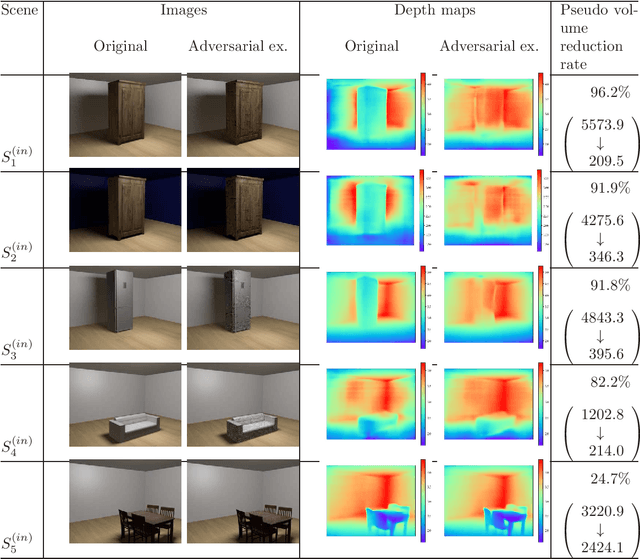
Abstract:This paper proposes an adversarial attack method to deep neural networks (DNNs) for monocular depth estimation, i.e., estimating the depth from a single image. Single image depth estimation has improved drastically in recent years due to the development of DNNs. However, vulnerabilities of DNNs for image classification have been revealed by adversarial attacks, and DNNs for monocular depth estimation could contain similar vulnerabilities. Therefore, research on vulnerabilities of DNNs for monocular depth estimation has spread rapidly, but many of them assume white-box conditions where inside information of DNNs is available, or are transferability-based black-box attacks that require a substitute DNN model and a training dataset. Utilizing Evolutionary Multi-objective Optimization, the proposed method in this paper analyzes DNNs under the black-box condition where only output depth maps are available. In addition, the proposed method does not require a substitute DNN that has a similar architecture to the target DNN nor any knowledge about training data used to train the target model. Experimental results showed that the proposed method succeeded in attacking two DNN-based methods that were trained with indoor and outdoor scenes respectively.
Adjust-free adversarial example generation in speech recognition using evolutionary multi-objective optimization under black-box condition
Dec 22, 2020



Abstract:This paper proposes a black-box adversarial attack method to automatic speech recognition systems. Some studies have attempted to attack neural networks for speech recognition; however, these methods did not consider the robustness of generated adversarial examples against timing lag with a target speech. The proposed method in this paper adopts Evolutionary Multi-objective Optimization (EMO)that allows it generating robust adversarial examples under black-box scenario. Experimental results showed that the proposed method successfully generated adjust-free adversarial examples, which are sufficiently robust against timing lag so that an attacker does not need to take the timing of playing it against the target speech.
Depth estimation from 4D light field videos
Dec 08, 2020



Abstract:Depth (disparity) estimation from 4D Light Field (LF) images has been a research topic for the last couple of years. Most studies have focused on depth estimation from static 4D LF images while not considering temporal information, i.e., LF videos. This paper proposes an end-to-end neural network architecture for depth estimation from 4D LF videos. This study also constructs a medium-scale synthetic 4D LF video dataset that can be used for training deep learning-based methods. Experimental results using synthetic and real-world 4D LF videos show that temporal information contributes to the improvement of depth estimation accuracy in noisy regions. Dataset and code is available at: https://mediaeng-lfv.github.io/LFV_Disparity_Estimation
Adversarial Example Generation using Evolutionary Multi-objective Optimization
Dec 30, 2019



Abstract:This paper proposes Evolutionary Multi-objective Optimization (EMO)-based Adversarial Example (AE) design method that performs under black-box setting. Previous gradient-based methods produce AEs by changing all pixels of a target image, while previous EC-based method changes small number of pixels to produce AEs. Thanks to EMO's property of population based-search, the proposed method produces various types of AEs involving ones locating between AEs generated by the previous two approaches, which helps to know the characteristics of a target model or to know unknown attack patterns. Experimental results showed the potential of the proposed method, e.g., it can generate robust AEs and, with the aid of DCT-based perturbation pattern generation, AEs for high resolution images.
Temporal shape super-resolution by intra-frame motion encoding using high-fps structured light
Oct 02, 2017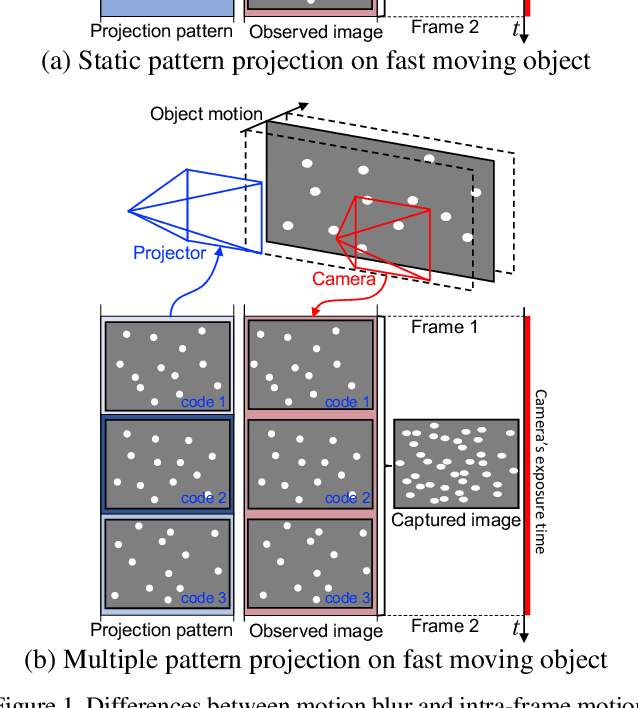
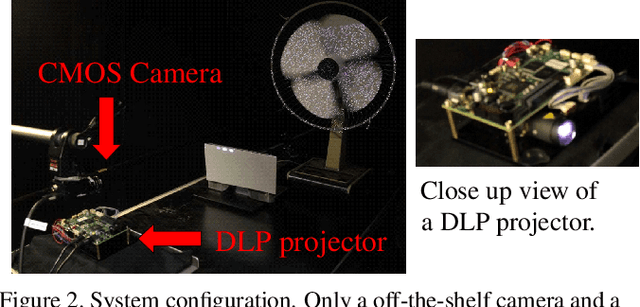
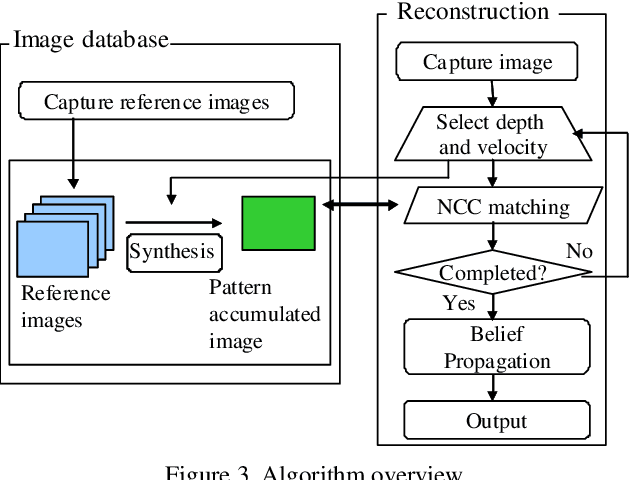
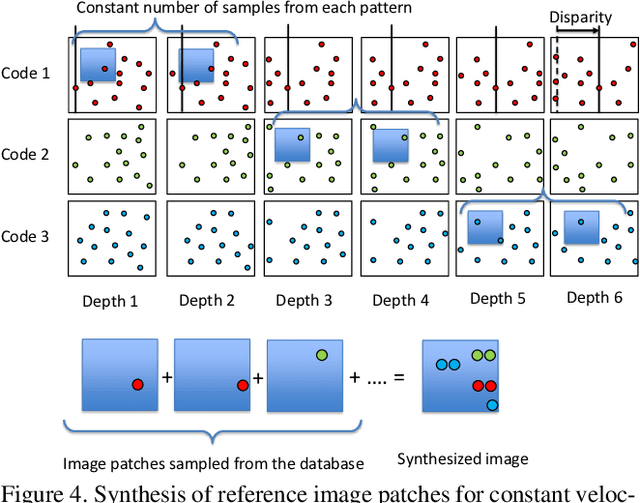
Abstract:One of the solutions of depth imaging of moving scene is to project a static pattern on the object and use just a single image for reconstruction. However, if the motion of the object is too fast with respect to the exposure time of the image sensor, patterns on the captured image are blurred and reconstruction fails. In this paper, we impose multiple projection patterns into each single captured image to realize temporal super resolution of the depth image sequences. With our method, multiple patterns are projected onto the object with higher fps than possible with a camera. In this case, the observed pattern varies depending on the depth and motion of the object, so we can extract temporal information of the scene from each single image. The decoding process is realized using a learning-based approach where no geometric calibration is needed. Experiments confirm the effectiveness of our method where sequential shapes are reconstructed from a single image. Both quantitative evaluations and comparisons with recent techniques were also conducted.
 Add to Chrome
Add to Chrome Add to Firefox
Add to Firefox Add to Edge
Add to Edge